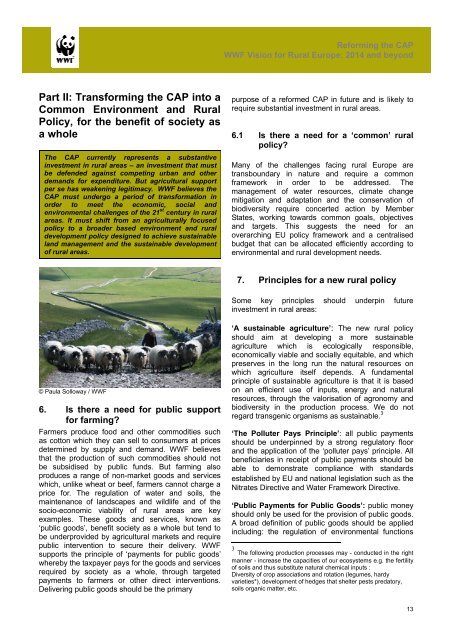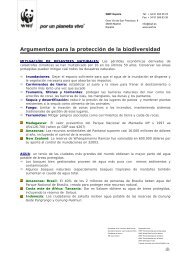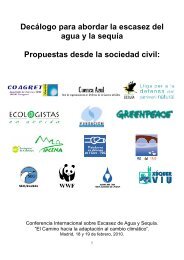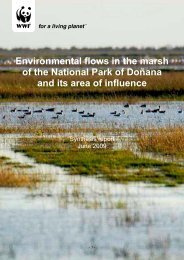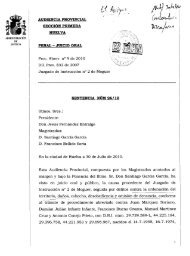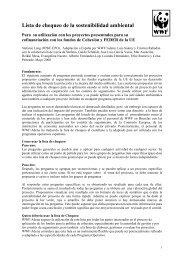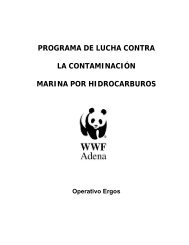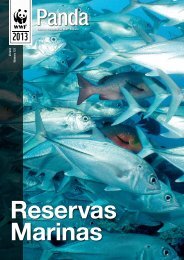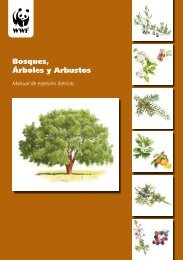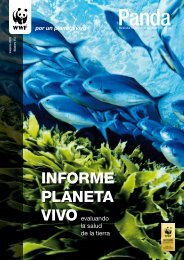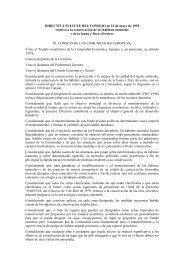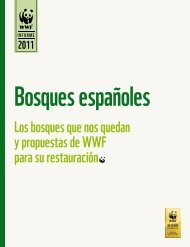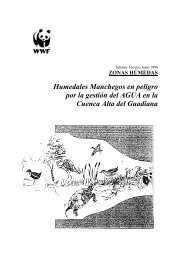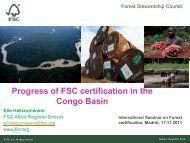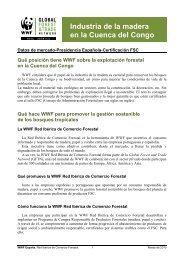Reforming the CAP WWF Vision for Rural Europe after 2013
Reforming the CAP WWF Vision for Rural Europe after 2013
Reforming the CAP WWF Vision for Rural Europe after 2013
You also want an ePaper? Increase the reach of your titles
YUMPU automatically turns print PDFs into web optimized ePapers that Google loves.
<strong>Re<strong>for</strong>ming</strong> <strong>the</strong> <strong>CAP</strong><br />
<strong>Re<strong>for</strong>ming</strong> <strong>the</strong> <strong>CAP</strong><br />
<strong>WWF</strong> <strong>Vision</strong> <strong>for</strong> <strong>Rural</strong> <strong>Europe</strong>: 2014 and beyond<br />
<strong>WWF</strong> <strong>Vision</strong> <strong>for</strong> <strong>Rural</strong> <strong>Europe</strong> <strong>after</strong> <strong>2013</strong><br />
Part II: Trans<strong>for</strong>ming <strong>the</strong> <strong>CAP</strong> into a<br />
Common Environment and <strong>Rural</strong><br />
Policy, <strong>for</strong> <strong>the</strong> benefit of society as<br />
a whole<br />
The <strong>CAP</strong> currently represents a substantive<br />
investment in rural areas – an investment that must<br />
be defended against competing urban and o<strong>the</strong>r<br />
demands <strong>for</strong> expenditure. But agricultural support<br />
per se has weakening legitimacy. <strong>WWF</strong> believes <strong>the</strong><br />
<strong>CAP</strong> must undergo a period of trans<strong>for</strong>mation in<br />
order to meet <strong>the</strong> economic, social and<br />
environmental challenges of <strong>the</strong> 21 st century in rural<br />
areas. It must shift from an agriculturally focused<br />
policy to a broader based environment and rural<br />
development policy designed to achieve sustainable<br />
land management and <strong>the</strong> sustainable development<br />
of rural areas.<br />
purpose of a re<strong>for</strong>med <strong>CAP</strong> in future and is likely to<br />
require substantial investment in rural areas.<br />
6.1 Is <strong>the</strong>re a need <strong>for</strong> a ‘common’ rural<br />
policy<br />
Many of <strong>the</strong> challenges facing rural <strong>Europe</strong> are<br />
transboundary in nature and require a common<br />
framework in order to be addressed. The<br />
management of water resources, climate change<br />
mitigation and adaptation and <strong>the</strong> conservation of<br />
biodiversity require concerted action by Member<br />
States, working towards common goals, objectives<br />
and targets. This suggests <strong>the</strong> need <strong>for</strong> an<br />
overarching EU policy framework and a centralised<br />
budget that can be allocated efficiently according to<br />
environmental and rural development needs.<br />
7. Principles <strong>for</strong> a new rural policy<br />
Some key principles should underpin future<br />
investment in rural areas:<br />
© Paula Solloway / <strong>WWF</strong><br />
6. Is <strong>the</strong>re a need <strong>for</strong> public support<br />
<strong>for</strong> farming<br />
Farmers produce food and o<strong>the</strong>r commodities such<br />
as cotton which <strong>the</strong>y can sell to consumers at prices<br />
determined by supply and demand. <strong>WWF</strong> believes<br />
that <strong>the</strong> production of such commodities should not<br />
be subsidised by public funds. But farming also<br />
produces a range of non-market goods and services<br />
which, unlike wheat or beef, farmers cannot charge a<br />
price <strong>for</strong>. The regulation of water and soils, <strong>the</strong><br />
maintenance of landscapes and wildlife and of <strong>the</strong><br />
socio-economic viability of rural areas are key<br />
examples. These goods and services, known as<br />
‘public goods’, benefit society as a whole but tend to<br />
be underprovided by agricultural markets and require<br />
public intervention to secure <strong>the</strong>ir delivery. <strong>WWF</strong><br />
supports <strong>the</strong> principle of ‘payments <strong>for</strong> public goods’<br />
whereby <strong>the</strong> taxpayer pays <strong>for</strong> <strong>the</strong> goods and services<br />
required by society as a whole, through targeted<br />
payments to farmers or o<strong>the</strong>r direct interventions.<br />
Delivering public goods should be <strong>the</strong> primary<br />
‘A sustainable agriculture’: The new rural policy<br />
should aim at developing a more sustainable<br />
agriculture which is ecologically responsible,<br />
economically viable and socially equitable, and which<br />
preserves in <strong>the</strong> long run <strong>the</strong> natural resources on<br />
which agriculture itself depends. A fundamental<br />
principle of sustainable agriculture is that it is based<br />
on an efficient use of inputs, energy and natural<br />
resources, through <strong>the</strong> valorisation of agronomy and<br />
biodiversity in <strong>the</strong> production process. We do not<br />
regard transgenic organisms as sustainable. 3<br />
‘The Polluter Pays Principle’: all public payments<br />
should be underpinned by a strong regulatory floor<br />
and <strong>the</strong> application of <strong>the</strong> ‘polluter pays’ principle. All<br />
beneficiaries in receipt of public payments should be<br />
able to demonstrate compliance with standards<br />
established by EU and national legislation such as <strong>the</strong><br />
Nitrates Directive and Water Framework Directive.<br />
‘Public Payments <strong>for</strong> Public Goods’: public money<br />
should only be used <strong>for</strong> <strong>the</strong> provision of public goods.<br />
A broad definition of public goods should be applied<br />
including: <strong>the</strong> regulation of environmental functions<br />
3 The following production processes may - conducted in <strong>the</strong> right<br />
manner - increase <strong>the</strong> capacities of our ecosystems e.g. <strong>the</strong> fertility<br />
of soils and thus substitute natural chemical inputs :<br />
Diversity of crop associations and rotation (legumes, hardy<br />
varieties*), development of hedges that shelter pests predatory,<br />
soils organic matter, etc.<br />
13


